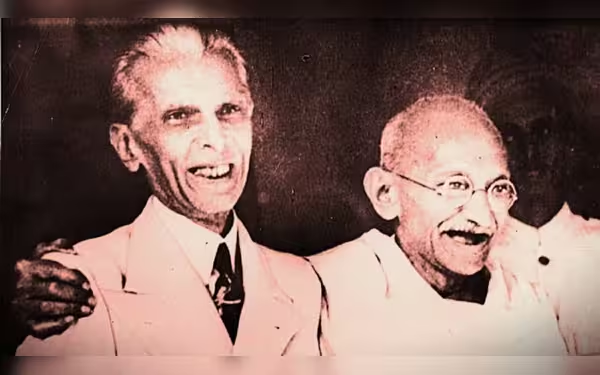Thursday, November 7, 2024 03:39 AM
Coexistence of Hindus and Muslims in Pakistan
- Muslim League advocated for coexistence, not division.
- Jinnah promoted Hindu-Muslim unity through appointments.
- Historical narratives shifted under later political leaders.
 Image Credits: thefridaytimes
Image Credits: thefridaytimesThe Muslim League's vision for Hindu-Muslim coexistence in Pakistan challenges divisive narratives and promotes an inclusive identity.
The coexistence of Hindus and Muslims in the Indian subcontinent has been a topic of intense debate and discussion, particularly in the context of the formation of Pakistan. Critics often argue that the All India Muslim League, which played a pivotal role in the creation of Pakistan, claimed that Hindus and Muslims could not live together. This narrative has unfortunately seeped into the official ideology of Pakistan, leading many to believe that the Muslim League was against the idea of coexistence. However, a closer examination of historical documents reveals a different story.
In 1940, Muhammad Ali Jinnah, the leader of the Muslim League, articulated the party's demands in an article published in Time and Tide. He stated, "To conclude, a constitution must be evolved that recognises that there are in India, two nations who both must share the governance of their common motherland." This statement emphasizes the need for cooperation and coexistence rather than division. The Muslim League never outright claimed that Hindus and Muslims could not coexist; rather, they sought to establish terms for a peaceful coexistence.
The Lahore Resolution further clarifies this stance, calling for "adequate, effective and mandatory safeguards" for minorities in both Muslim-majority and Hindu-majority areas. This indicates an understanding that both communities would exist alongside each other, with protections in place for their rights and interests. The Muslim League's approach was not one of exclusion but rather of ensuring that both groups could share governance in a manner that respected their distinct identities.
By asserting that Muslims were a nation rather than a minority, the Muslim League aimed for a balanced partnership in governance. This concept aligns with what modern political science refers to as consociationalism, which seeks to protect minority rights against the potential tyranny of the majority. While the ideal scenario would be a society without such distinctions, the reality of majoritarianism necessitates these arrangements in many countries.
It is essential to recognize that Jinnah, often referred to as the "Best Ambassador of Hindu Muslim Unity," took significant steps to promote harmony between the two communities. He appointed a Hindu, Jogindranath Mandal, as Pakistan's first law minister, which contradicts the notion that Hindus and Muslims could not coexist. This historical context raises the question: when did this misconception take root in the national consciousness?
Textbooks from the 1950s and 1960s do not support the idea that Hindus and Muslims could not live together. In fact, a history book published in 1958 included notable Hindu figures alongside Muslim heroes, showcasing a more inclusive narrative. However, the political landscape began to shift under leaders like Zulfikar Ali Bhutto, whose anti-Hindu sentiments marked a departure from Jinnah's vision. Bhutto's rhetoric, particularly his calls for conflict against India, contributed to a growing narrative that painted Hindus as adversaries.
Ultimately, this anti-Hindu narrative does not reflect the true spirit of Pakistan, a nation that is home to a significant Hindu population. It is crucial for Pakistan to move beyond this divisive rhetoric and embrace a more inclusive identity. By recognizing the contributions of all its citizens, regardless of their religious background, Pakistan can work towards becoming a more normal and harmonious state.
The historical evidence suggests that the Muslim League did not advocate for the separation of Hindus and Muslims but rather sought a framework for coexistence. As Pakistan continues to evolve, it is vital to shed the divisive narratives of the past and foster an environment where all communities can thrive together. Only then can Pakistan truly embody the ideals of unity and diversity that its founders envisioned.













